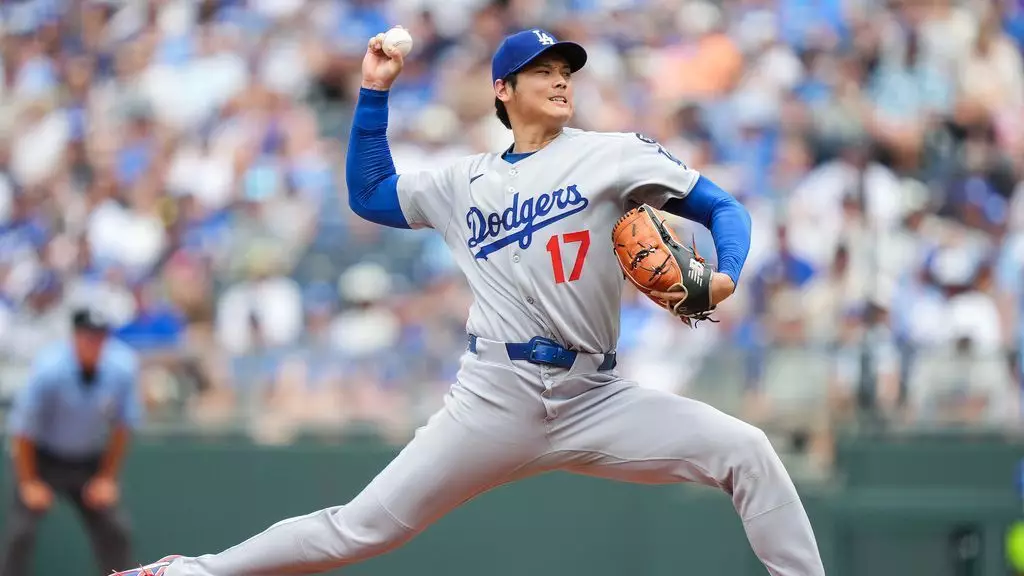Shohei Ohtani’s recent appearance on the mound for the Los Angeles Dodgers marked a significant milestone in his extraordinary comeback. Having sat out the entire previous season to recover from Tommy John surgery, Ohtani’s ability to deliver a blazing fastball clocked at 101.7 mph affirmed that his elite pitching prowess remains intact. His third start this season, and the first extending beyond a single inning, showcased not only his raw velocity but also an encouraging command that suggests he is steadily regaining his form. This outing is more than a glimpse of a pitcher regaining strength—it is a powerful indication of Ohtani’s resilience and determination to return as a dominant two-way player.
Strategy and Confidence: Ohtani’s Efficient Mound Presence
Beyond the sheer speed of his fastball, Ohtani impressed with his laser focus and strategic approach on the mound. Throwing strikes on 20 of 27 pitches and attacking hitters aggressively, he demonstrated a level of precision that belies his hiatus from regular pitching competition. The two innings were punctuated by a ground ball double play and a striking slider that retired a promising rookie, highlighting a mix of power and finesse in his pitching arsenal. Dodgers manager Dave Roberts praised Ohtani’s competitive mindset, acknowledging the innate drive that pushes him to bully hitters with triple-digit heat despite the long road back to full health. This blend of fierce competitiveness and tactical execution keeps fans and teammates optimistic about his potential impact as the season progresses.
Statistical Context and Ballpark Adjustments
Tracing Ohtani’s career trajectory, his five seasons with the Los Angeles Angels remain a benchmark for excellence—38 wins against 19 losses with an enviable 3.01 ERA over 86 starts. Missing an entire season could have derailed many players, but Ohtani’s return to form, especially the velocity displayed in recent outings, suggests that the surgery and rehab have succeeded beyond expectations. Still, it is clear that he is not rushing. Using an opener role to ease back highlights a careful management of innings and workload, crucial for preserving long-term health. While his offensive production remains formidable, with 29 home runs this season as a designated hitter, his cautious reintroduction to pitching may well be the smartest path to durability in a sport that demands versatility but punishes overuse.
The Psychological Battle and the Competitive Edge
Pitching at elite velocity after surgery is as much a mental challenge as a physical one. Ohtani’s remarks reveal a keen awareness of his body’s limits and a determination to refine the “little things” that separate good pitchers from great ones. His ability to hit 100-plus mph in game situations, and even reach rare heights during international play, underscores a mindset that refuses to settle for mediocrity. The anecdotes from opposing players, such as Vinnie Pasquantino, add a human element to Ohtani’s legend—demonstrating how his presence on the mound can both intimidate and demand respect. It’s this unyielding competitive spirit that sets Ohtani apart, driving him to overcome setbacks and maintaining his status as one of baseball’s most extraordinary talents.
Balancing Stardom and Health: Choosing Wisely Over Fame
Notably, Ohtani’s decision to skip the Home Run Derby despite his prodigious hitting power reflects a mature awareness of his physical limits. By prioritizing his long-term health over immediate spectacle, he signals a shift from star-studded exhibition events back to focused performance on the field. This move is a subtle but powerful statement: a player of his stature can resist the allure of momentary glory to safeguard his career’s longevity. While fans may feel disappointment, this choice enhances Ohtani’s narrative as a disciplined athlete with a strategic approach to balancing fame, performance, and body care.
The Impact on Dodgers and Baseball’s Future
Ohtani’s reintegration into the Dodgers’ rotation carries broader implications beyond his own statistics. For a team hungry for postseason success, having a two-way weapon who can impact games both on the mound and in the batter’s box is invaluable. His presence disrupts traditional baseball norms, forcing opposing managers to consider unique challenges. As Ohtani continues to refine his pitching mechanics and rebuild stamina, he could redefine what is possible for modern baseball players. His comeback serves as an inspiration to athletes recovering from major injuries and an electrifying prospect for the sport’s future evolution. Watching how his role develops this season will be essential for understanding the next chapter in baseball’s ongoing story of innovation and resilience.

